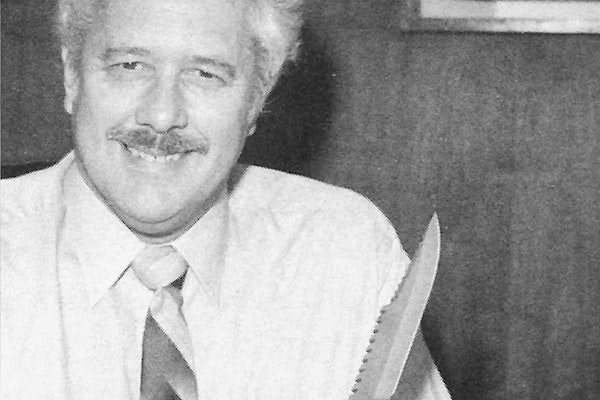A dull knife is a dangerous knife, but with so many different techniques and devices out there, sharpening your knives yourself can feel overwhelming. Don’t let that deter you – you can sharpen your knives at home with minimal equipment or experience. Fortunately, while there are many different methods, sharpening becomes a simple task once you understand the basics—and once you have that down, you can begin to experiment with different styles and techniques.
Tools for the Job:
One coarse whetstone
One fine whetstone
A couple of wet paper towels
Step 1: Always start with your coarse stone
Begin by wetting your stone with the paper towel. The coarse stone will take more material off the knife, so you’re going to do fewer passes than with the fine stone – about 10 passes on each side.

Step 2: Find your angle
Hold your hand and the blade of your knife at the exact same angle throughout each pass. An angle of 22.5 degrees works well. Eventually your hand will be able to naturally find that perfect degree without having to think too much about it—it will become second-nature.
To find your angle, hold your knife blade perpendicular to your stone, rotate the blade so that it’s halfway between vertical and horizontal (this will be around 45 degrees), then cut that space in half and you will achieve a 22.5 degree angle.

Step 3: Consistency is key
Start with the edge of the blade in the top corner of your stone. Bring the blade toward yourself in a smooth motion, ending with the tip of the blade on the diamond of your whetstone while maintaining the angle of your knife with each stroke.

Step 4: Switch sides
Flip your stone around and start with the blade of the knife in the corner closest to you to sharpen the other side of the blade. Swipe away from your body. Always make sure you do the same number of passes on each side or you risk taking too much material off of one side and not enough off the other.

Step 5: Remove the Burr
When you sharpen the blade on one side, the material will build up creating a burr. To remove it, flip your knife around one more time and give your blade one last pass.
Step 6: Switch over to your fine stone
Repeat steps 1-5. The fine stone removes less material, so you can do more passes on each side of the blade. Around 20 per side is usually optimal.

While there are many methods for getting the job done, this basic tutorial should get you started and keep your knives performing at their sharpest.




